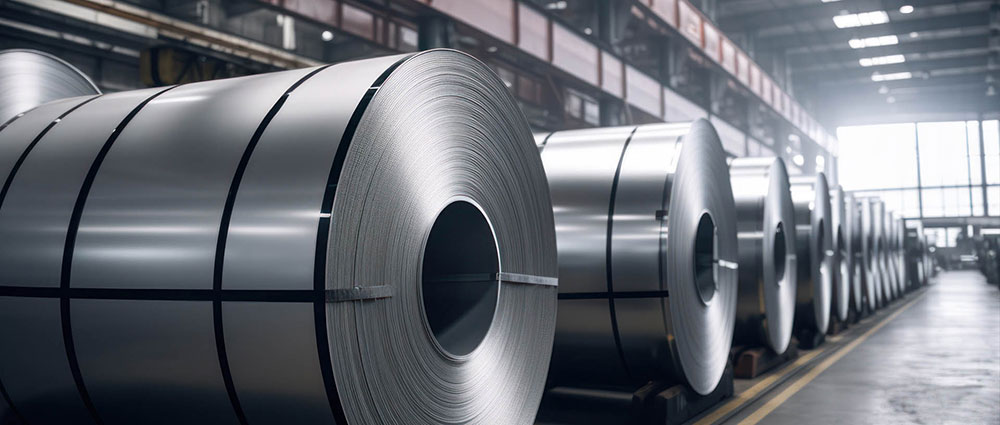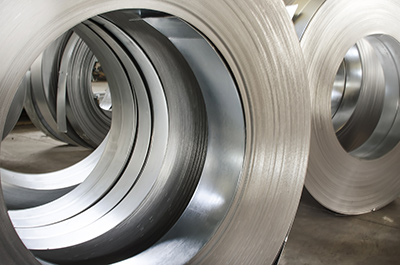SMRs and the future of sustainable steel
Modern steelmaking is transitioning toward electrified process with electric arc furnaces (EAFs) and electric smelting furnaces (ESFs) that require a significant quantity of clean electricity to enable low greenhouse gas (GHG) emission steel production. SMRs are a key enabling technology that can provide reliable clean electricity at the scales required for steel production.
EAFs use high-power electric arcs, typically in the range of 50 to 150 megawatts, to rapidly melt scrap steel or direct reduced iron (DRI). While often supplemented by natural gas heating, EAF’s primary source of energy is electricity. This enables EAFs to be powered from a range of sources, including fossil-free and emission-free options.
Globally, however, only ~30% of steel production uses EAFs due, in part, to fossil-fuel dominated infrastructure and limited access to clean power and suitable raw materials like scrap steel. This is where SMRs, with their ability to provide clean, reliable, and flexible electricity, can make a difference as they are ideally suited to support the expansion of low- emission steelmaking worldwide.
To date, there are no EAFs directly powered by SMRs, although several companies are exploring this promising pathway. Additionally, Hatch has been a leader in the SMR industry since 2012 and provides expert guidance in project development, regulatory navigation, and integration of SMRs into steelmaking and other industrial applications.

Powerful potential, practical challenges
SMRs align well with EAF operations for several reasons, including:
- Reliable 24/7 electricity, making them an excellent source of baseload power for energy-intensive steelmaking and ensures high asset utilization and throughput.
- Zero greenhouse emissions, supporting the transition to low-emission steel production.
- Scalability, allowing SMRs to be added as energy demand grows.
- Energy security and independence.
Pairing EAFs with SMRs is not without issues, EAFs are among the most challenging electrical loads. They are characterized by highly nonlinear behavior and rapid fluctuations in power demand. During the bore-down phase—when arcs are struck on the cold scrap, the arc is typically very unstable. This instability results in rapid variations in current and voltage, which in turn generate harmonics, voltage flicker, and unbalance that can propagate through the connected electrical grid.
In addition to variability resulting from the arcing process, EAF operation is typically executed in batches (heats) resulting in a load that drops to zero at the end of a heat and then ramps up quickly at the start of the next heat. These fluctuations pose significant challenges for captive generation systems and grids with significant renewable penetration, where supply and demand must be tightly balanced in real time. In particular, SMRs have challenges with being able to ramp generation to match the load profile, which require a technical solution to address.
There are multiple power stabilization and power management solutions to mitigate these effects. Power quality solutions such as harmonic filters and static VAR compensators (SVCs) have been on the market for decades and are commonplace in EAF installations. Static synchronous compensators (STATCOMs), a high-speed alternative to SVCs, offer superior performance and are approaching cost parity. Back-to-back converters (Elksnis and Kadar, 2024) are one of the more recent developments and offer an even greater level of grid immunity from the highly variable furnace load. Beyond stabilization, power management solutions are valuable for balancing generation and load, especially in microgrid or islanded configurations. Solutions include high-speed switching systems to enable real-time load balancing in response to power fluctuations; energy storage systems to absorb or supply power when needed; and microgrid integration to integrate other generation sources and storage to create a resilient and flexible power supply architecture.
To determine the power quality and power management solution requires an expert assessment and understanding of the solutions so that it can be tailored to meet the requirements of the system.
Right sizes, advanced safety, and potentially improved economics
Conventional nuclear power plants are typically designed to generate gigawatts of electricity. SMRs are designed to better match the demand of a steel facility, offering a more compact and flexible energy solution.
Additionally, new SMR technologies are incorporating advanced safety features designed to be “walkaway safe” meaning they will enter into a safe state after an upset scenario without any operator intervention. For example, some SMR vendors are leveraging natural circulation to remove decay heat, instead of relying on an active cooling system. This reduces the need for complex safety systems, making the reactor safer and simpler to operate.
Forging the future
The most promising starting point for integrating SMRs with EAFs lies in regions like North America and Europe, where nuclear expertise and steelmaking infrastructure already exist. These areas have regulatory frameworks, skilled workforce, and supply chains needed to lead the way.
SMRs offer more than just a new power source. They represent a strategic opportunity to decarbonize one of the world’s most emissions-intensive industries. By pairing them with electrified steelmaking processes, we can unlock a new era of clean, resilient, and scalable steel production.
Hatch has the expertise in both the steel and complex power grids to help clients unlock the potential of SMRs while building resilient, long-term strategies. Reach out to us to learn how we are supporting the next generation of steelmaking and listen to our podcast series to hear more from our experts.
ReferencesElksnis, Y. and Kadar, L. (2024). Next Generation Power Supply Options for Electric Arc Furnaces and
Electric Smelting Furnaces, 13th European Electric Steelmaking Conference, Essen, Germany.

Forging the Future: Decarbonizing the Steel Industry Blog Series
- SMRs and the future of sustainable steel
- Iron ore: The decarbonization transformation
- Navigating the waves: Steel industry's raw material challenges in the green transition
- Navigating challenges and embracing innovation in the transition to green metal
- Pioneering the path to green steel: Challenges, innovations, and the road ahead
- Beyond the Furnace: Elevating GHG Reporting in the Steel Sector

Richard MacRosty
Global Director, Power & Control Technologies
Richard serves as the Global Director of the Power & Control Technologies group at Hatch, where he leads a specialized team focused on the development and support of high-power applications and automation solutions. These solutions are integral to several of Hatch’s core technologies, particularly electric smelting furnaces. A key focus of the team is solving complex problems to deliver effective results in some of the industry's most demanding environments. Richard began his career at Hatch in 2005 as a furnace control engineer, after earning a PhD focused on advanced control strategies aimed at optimizing Electric Arc Furnace (EAF) operations. He has built over 20 years of experience spanning the full lifecycle of smelter projects—from concept and design to commissioning and operation. His contributions also encompass the development of innovative technologies and performance enhancements on a wide range of applications, equipping him with a comprehensive understanding and significant technical expertise in industrial power and control systems.
